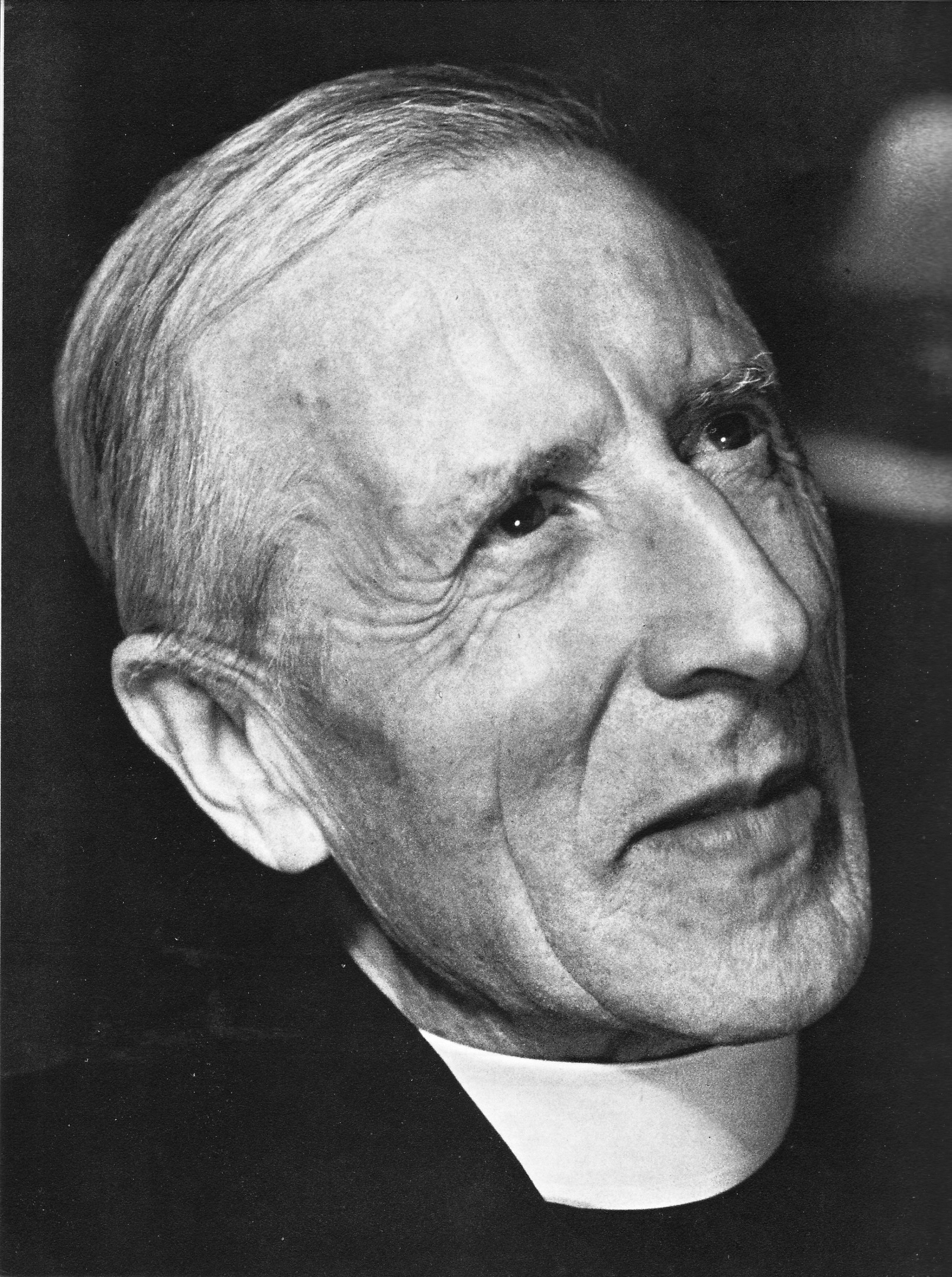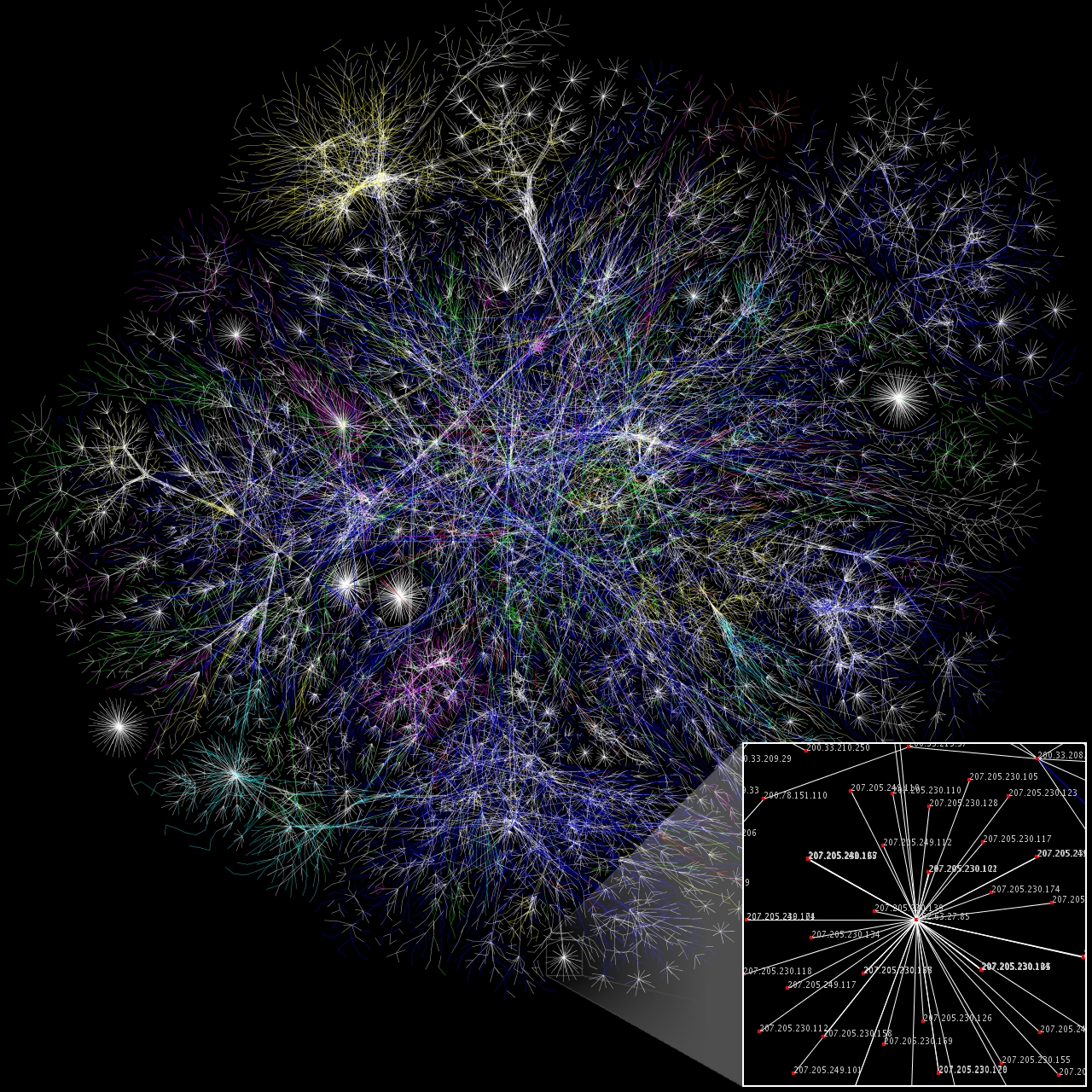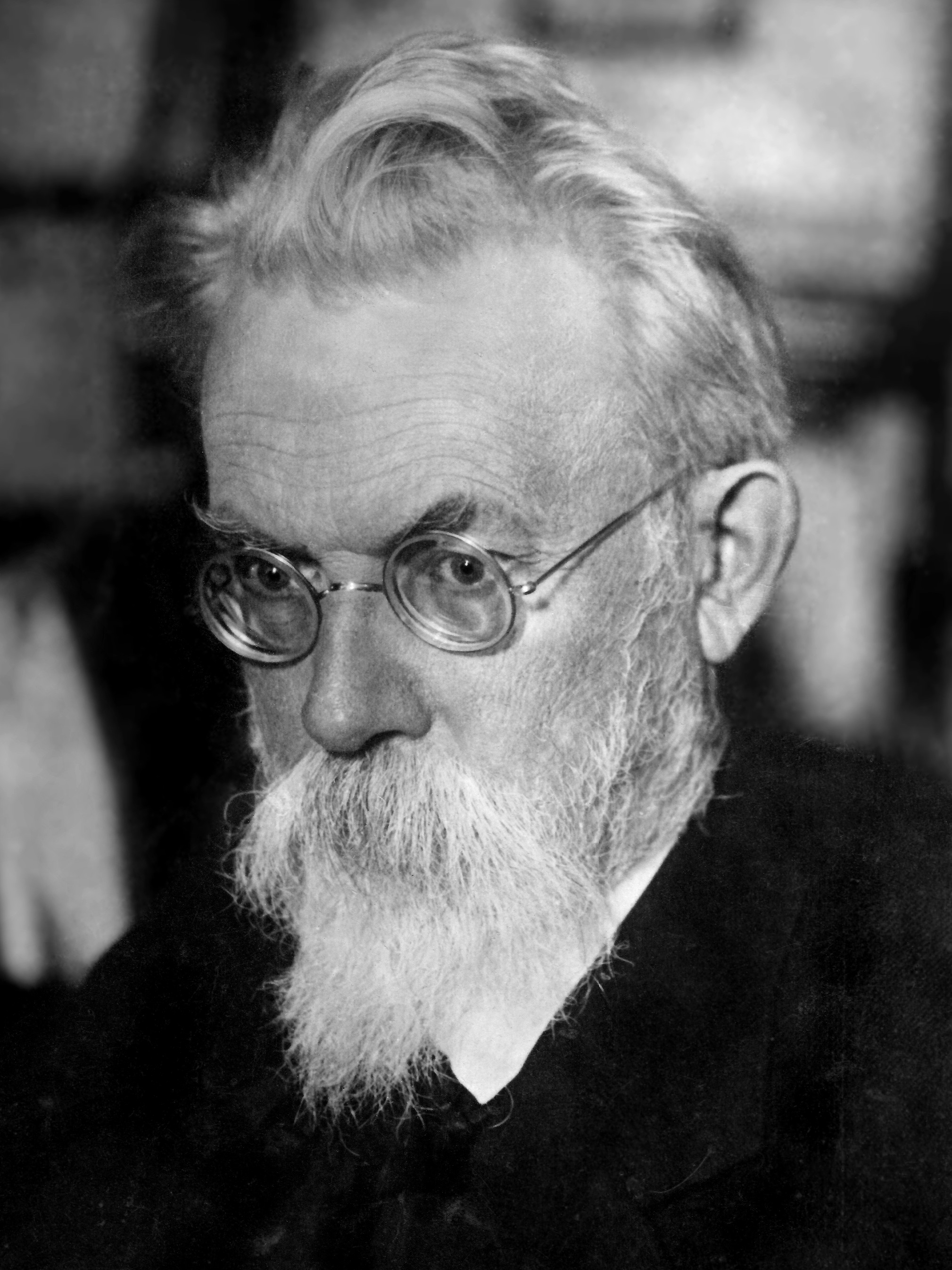|
Noosphere
The noosphere (alternate spelling noösphere) is a philosophical concept developed and popularized by the biogeochemist Vladimir Vernadsky and philosopher and Jesuit priest Pierre Teilhard de Chardin. Vernadsky defined the noosphere as the new state of the biosphere, and described it as the planetary "sphere of reason". The noosphere represents the highest stage of biospheric development, that of humankind's rational activities. The word is derived from the Greek νόος ("nous, mind, reason") and σφαῖρα ("sphere"), in lexical analogy to "atmosphere" and "biosphere". The concept cannot be accredited to a single author. The founding authors Vernadsky and de Chardin developed two related but starkly different concepts, the former grounded in the geological sciences, and the latter in theology. Both conceptions of the noosphere share the common thesis that together human reason and scientific thought have created, and will continue to create, the next evolutionary geologi ... [...More Info...] [...Related Items...] OR: [Wikipedia] [Google] [Baidu] |
Global Consciousness Project
The Global Consciousness Project (GCP, also called the EGG Project) is a parapsychology experiment begun in 1998 as an attempt to detect possible interactions of "global consciousness" with physical systems. The project monitors a geographically distributed network of hardware random number generators in a bid to identify anomalous outputs that correlate with widespread emotional responses to sets of world events, or periods of focused attention by large numbers of people. The GCP is privately funded through the Institute of Noetic Sciences and describes itself as an international collaboration of about 100 research scientists and engineers. Skeptics such as Robert T. Carroll, Claus Larsen, and others have questioned the methodology of the Global Consciousness Project, particularly how the data are selected and interpreted, saying the data anomalies reported by the project are the result of "pattern matching" and selection bias which ultimately fail to support a belief in psi or ... [...More Info...] [...Related Items...] OR: [Wikipedia] [Google] [Baidu] |
Vladimir Vernadsky
Vladimir Ivanovich Vernadsky (), also spelt Volodymyr Ivanovych Vernadsky (; – 6 January 1945), was a Russian, Ukrainian, and Soviet mineralogist and geochemist who is considered one of the founders of geochemistry, biogeochemistry, and radiogeology. He was one of the founders and the first president of the Ukrainian Academy of Sciences (now National Academy of Sciences of Ukraine). Vladimir Vernadsky is most noted for his 1926 book ''The Biosphere'' in which he inadvertently worked to popularize Eduard Suess's 1875 term biosphere, by hypothesizing that life is the geological force that shapes the earth. In 1943 he was awarded the USSR State Prize, Stalin Prize. Vernadsky's portrait is depicted on the Ukrainian ₴1,000 hryvnia banknote. Early life Vernadsky was born in Saint Petersburg, Russian Empire, on in the family of the native Kyiv residents Russian Imperial economist Ivan Vernadsky and Anna Konstantinovich, who came from an old Russia noble family. According to famil ... [...More Info...] [...Related Items...] OR: [Wikipedia] [Google] [Baidu] |
Omega Point
The Omega Point is a theorized future event in which the entirety of the universe spirals toward a final point of unification. The term was invented by the French Jesuit Catholic priest Pierre Teilhard de Chardin (1881–1955). Teilhard argued that the Omega Point resembles the Christian Logos, namely Christ, who draws all things into himself, who in the words of the Nicene Creed, is "God from God", "Light from Light", "True God from True God", and "through him all things were made". In the Book of Revelation, Christ describes himself three times as " the Alpha and the Omega, the beginning and the end". Several decades after Teilhard's death, the idea of the Omega Point was expanded upon in the writings of John David Garcia (1971), Paolo Soleri (1981), Frank Tipler (1994), and David Deutsch (1997). Pierre Teilhard de Chardin's theory Etymology Teilhard de Chardin was a paleontologist and Roman Catholic priest in the Jesuit order. In France in the 1920s, he began incorporating ... [...More Info...] [...Related Items...] OR: [Wikipedia] [Google] [Baidu] |
Pierre Teilhard De Chardin
Pierre Teilhard de Chardin (; 1 May 1881 – 10 April 1955) was a French Jesuit, Catholic priest, scientist, palaeontologist, theologian, and teacher. He was Darwinian and progressive in outlook and the author of several influential theological and philosophical books. His mainstream scientific achievements include his palaeontological research in China, taking part in the discovery of the significant Peking Man fossils from the Zhoukoudian cave complex near Beijing. His more speculative ideas, sometimes criticized as pseudoscientific, have included a vitalist conception of the Omega Point. Along with Vladimir Vernadsky, they also contributed to the development of the concept of a noosphere. In 1962, the Holy Office condemned several of Teilhard's works based on their alleged ambiguities and doctrinal errors. Some eminent Catholic figures, including Pope Benedict XVI and Pope Francis, have made positive comments on some of his ideas since. The response to his writings by ... [...More Info...] [...Related Items...] OR: [Wikipedia] [Google] [Baidu] |
Global Brain
The global brain is a neuroscience-inspired and futurological vision of the planetary information and communications technology network that interconnects all humans and their technological artifacts. As this network stores ever more information, takes over ever more functions of coordination and communication from traditional organizations, and becomes increasingly intelligent, it increasingly plays the role of a brain for the planet Earth. In the philosophy of mind, global brain finds an analog in Averroes's theory of the unity of the intellect. Basic ideas Proponents of the global brain hypothesis claim that the Internet increasingly ties its users together into a single information processing system that functions as part of the collective nervous system of the planet. The intelligence of this network is collective or distributed: it is not centralized or localized in any particular individual, organization or computer system. Therefore, no one can command or control it. Ra ... [...More Info...] [...Related Items...] OR: [Wikipedia] [Google] [Baidu] |
Anthroposphere
The anthroposphere refers to that part of the Earth system that is made or modified by humans for use in human activities and human habitats. The term has been suggested for inclusion as one of the Earth's spheres, while others use the related term technosphere. The term "anthroposphere" was first coined by Austrian geologist Eduard Suess in 1862. The anthroposphere can be viewed as a human-generated equivalent to the biosphere. While the biosphere is the total biomass of the Earth and its interaction with its systems, the anthroposphere is the total mass of human-generated systems and materials, including the human population, and its interaction with the Earth's systems. A recent study estimated the mass of anthropogenic creations as 1.1 trillion tons in 2020, equivalent to the mass of all living organisms that comprise the biosphere. However, while the biosphere is able to efficiently produce and recycle materials through processes like photosynthesis and decomposition, the an ... [...More Info...] [...Related Items...] OR: [Wikipedia] [Google] [Baidu] |
Cyberspace
Cyberspace is an interconnected digital environment. It is a type of virtual world popularized with the rise of the Internet. The term entered popular culture from science fiction and the arts but is now used by technology strategists, security professionals, governments, military and industry leaders and entrepreneurs to describe the domain of the global technology environment, commonly defined as standing for the global network of interdependent information technology infrastructures, telecommunications networks and computer processing systems. Others consider cyberspace to be just a notional environment in which communication over computer networks occurs. The word became popular in the 1990s when the use of the Internet, networking, and digital communication were all growing dramatically; the term ''cyberspace'' was able to represent the many new ideas and phenomena that were emerging. As a social experience, individuals can interact, exchange ideas, share information, provi ... [...More Info...] [...Related Items...] OR: [Wikipedia] [Google] [Baidu] |
Biogeochemistry
Biogeochemistry is the Branches of science, scientific discipline that involves the study of the chemistry, chemical, physics, physical, geology, geological, and biology, biological processes and reactions that govern the composition of the natural environment (including the biosphere, the cryosphere, the hydrosphere, the pedosphere, the Earth's atmosphere, atmosphere, and the lithosphere). In particular, biogeochemistry is the study of biogeochemical cycles, the cycles of chemical elements such as carbon and nitrogen, and their biological interaction, interactions with and incorporation into life, living things transported through earth scale biological systems in space and time. The field focuses on chemical cycles which are either driven by or influence biological activity. Particular emphasis is placed on the study of Carbon cycle, carbon, Nitrogen cycle, nitrogen, Oxygen cycle, oxygen, Sulfur cycle, sulfur, Iron cycle, iron, and Phosphorus cycle, phosphorus cycles. Biogeochem ... [...More Info...] [...Related Items...] OR: [Wikipedia] [Google] [Baidu] |
Social Network
A social network is a social structure consisting of a set of social actors (such as individuals or organizations), networks of Dyad (sociology), dyadic ties, and other Social relation, social interactions between actors. The social network perspective provides a set of methods for analyzing the structure of whole social entities along with a variety of theories explaining the patterns observed in these structures. The study of these structures uses social network analysis to identify local and global patterns, locate influential entities, and examine dynamics of networks. For instance, social network analysis has been used in studying the spread of misinformation on social media platforms or analyzing the influence of key figures in social networks. Social networks and the analysis of them is an inherently Interdisciplinarity, interdisciplinary academic field which emerged from social psychology, sociology, statistics, and graph theory. Georg Simmel authored early structural th ... [...More Info...] [...Related Items...] OR: [Wikipedia] [Google] [Baidu] |
Philosophy
Philosophy ('love of wisdom' in Ancient Greek) is a systematic study of general and fundamental questions concerning topics like existence, reason, knowledge, Value (ethics and social sciences), value, mind, and language. It is a rational and critical inquiry that reflects on its methods and assumptions. Historically, many of the individual sciences, such as physics and psychology, formed part of philosophy. However, they are considered separate academic disciplines in the modern sense of the term. Influential traditions in the history of philosophy include Western philosophy, Western, Islamic philosophy, Arabic–Persian, Indian philosophy, Indian, and Chinese philosophy. Western philosophy originated in Ancient Greece and covers a wide area of philosophical subfields. A central topic in Arabic–Persian philosophy is the relation between reason and revelation. Indian philosophy combines the Spirituality, spiritual problem of how to reach Enlightenment in Buddhism, enlighten ... [...More Info...] [...Related Items...] OR: [Wikipedia] [Google] [Baidu] |







